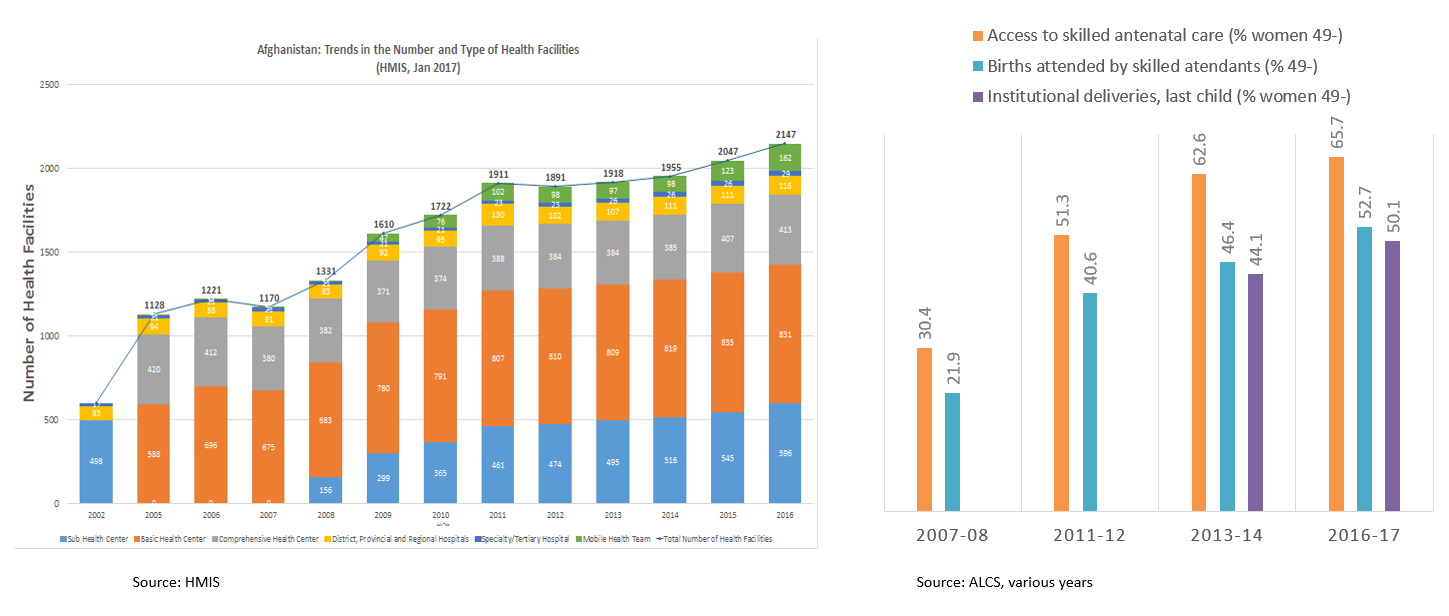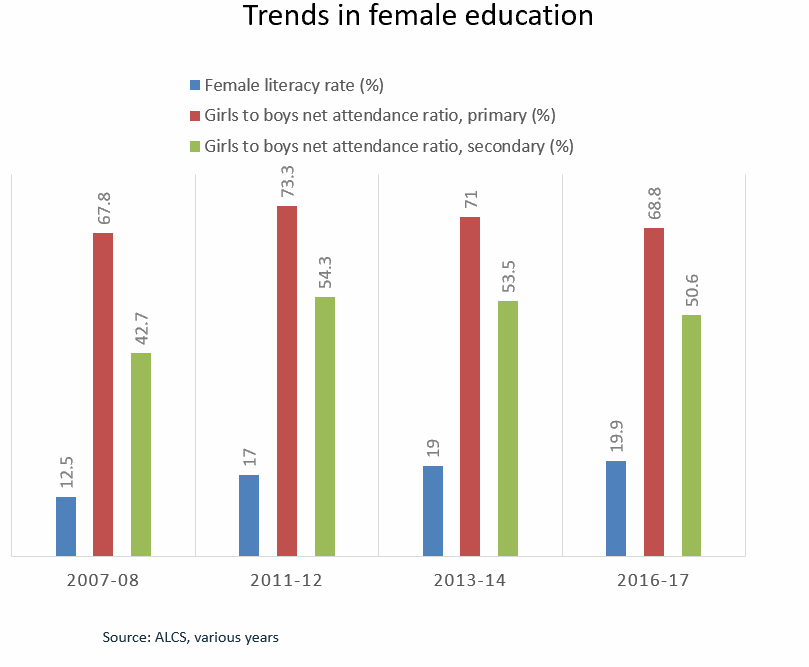Continued international aid, including through the Afghanistan Reconstruction Trust Fund (ARTF), is vital to create better lives for millions of Afghans and sustain development gains. The #ProtectTheGains series highlights ARTF projects that have made a real difference toward achieving a more prosperous, inclusive, and peaceful Afghanistan.
Not long ago, medical doctors in Afghanistan’s Kama district knew little about—let alone how to treat—Leishmaniasis, a parasitic disease that spreads through the bite of certain types of sandflies.
“The good news is that we now know the how,” says Dr. Mohammad Mashal Stanekzai, who is heading a district hospital in the eastern Nangarhar Province. Like thousands of other Afghan medical personnel, Stanekzai trained through the Sehatmandi project, which aims to improve the quality of health and nutrition across Afghanistan. Now he can provide effective treatment to local residents.
Hundreds of kilometers away, Mohammad Ibrahim Muhammadi, a school principal in Kabul, recalls how his school looked like before it was rebuilt. “Just five years ago, we used to teach our students under a tent or in the open air,” says Muhammadi. “Now we have a proper building as well as enough materials and facilities, like a computer lab and a library.”
The new school building has helped boost the quality of education as students can learn in a better environment. Parents, too, have taken notice, and are more have started to enroll their children in the school, especially girls.
These two stories—among countless others—show how much progress Afghanistan has achieved in the past two decades in improving the human capital of its people, providing them with better health and education opportunities.
The share of births attended by skilled personnel has increased to 58.8 percent from 14.9 percent in the past 18 years
Today, more Afghans have access to primary healthcare in their neighborhood. The share of births attended by skilled personnel has increased to 58.8 percent from 14.9 percent, and the maternal mortality ratio has reduced compared in the past 18 years.
The number of children enrolled in schools has increased from 3.8 million in 2003 to 6.3 million by 2017. Despite prevailing challenges, the quality of education has improved.
None of this would have been possible without continued support from the international community through the Afghanistan Reconstruction Trust Fund (ARTF), which the World Bank manages on behalf of 34 donors, and the International Development Association (IDA), the World Bank Group’s fund for the poorest countries.
How does Afghanistan fare on the Human Capital Index?
Despite this commendable progress, and notwithstanding the Afghan government’s commitment to improving human capital in recent years, Afghanistan still has long ways to go to realize its full human capital potential, especially in health and education.
As highlighted in the recently updated World Bank Human Capital Index (HCI), almost half of Afghanistan’s 18,000 schools lack proper buildings. An estimated 3.7 million children are still out of school—and that, despite massive investment in the education sector.
Also alarming is that children enrolled in schools are not learning much, partly because their teachers do not have the relevant skills or knowledge . Data from 2013 shows that 93 percent of 10-year-old Afghan children cannot read and understand a simple text when they finish primary school . This is higher than the average for the South Asia region (59%) and Afghanistan’s income group peers (91%).
Currently, 67 percent of boys compared to 48 percent of girls are enrolled in school.

Afghanistan also lags far behind in reducing gender gaps, especially in the education and health sectors . Currently, 67 percent of boys compared to 48 percent of girls are enrolled in school. Moreover, despite significant improvements in the coverage and quality of health services, and a substantial drop in infant and under-five mortality, health indicators in Afghanistan are still worse than the average for low-income countries, indicating a need to further increase access to services, especially for women.
Overall, a child born in Afghanistan today will be 40 percent as productive when she grows up as she could be if she enjoyed complete education and full health. Following the same logic, she will earn 60 percent less than what she could with optimal basic health and education systems in place.

Addressing human capital gaps
Afghanistan needs to continue increasing the coverage and quality of basic education and health services , and intensify efforts to ensure its human capital gains translate into better employment for nearly 400,000 new job seekers each year.

To achieve that, Afghanistan needs to strengthen its governance by increasing transparency in budget spending, teacher recruitment, and merit-based appointments in education. The country also needs to improve transparency in health service delivery, build the capacity of the Ministry of Public Health to ensure access to health care for all Afghans, and improve data to deliver these vital public services efficiently and equitably across the country.
Afghanistan currently spends $6 per capita each year on health spending. As it aims to become self-sufficient, the Afghan government must use its resources for health wisely to benefit all citizens.
Consistent policies are also required to prioritize women’s empowerment so that Afghanistan’s wide gender gap is addressed. For example, the country needs to train and hire more female teachers to encourage girls’ attendance.
Multi-dimensional programs are also needed to improve youth’s role in economic growth and include them better into the country’s social fabric. Such programs can support young people to transition more easily from school to work while preventing them from adopting harmful social behaviors. In rural areas, young people can benefit from self-employment support programs. In urban settings, opportunities to acquire soft as well as technical skills relevant in the labor market can help more youths find gainful employment.
International aid has played a critical role in improving Afghanistan’s development, especially in health and education. As the country still relies heavily on international aid, improving human capital will require continued international support, including through the ARTF, to create a better future for millions of Afghans.


Join the Conversation